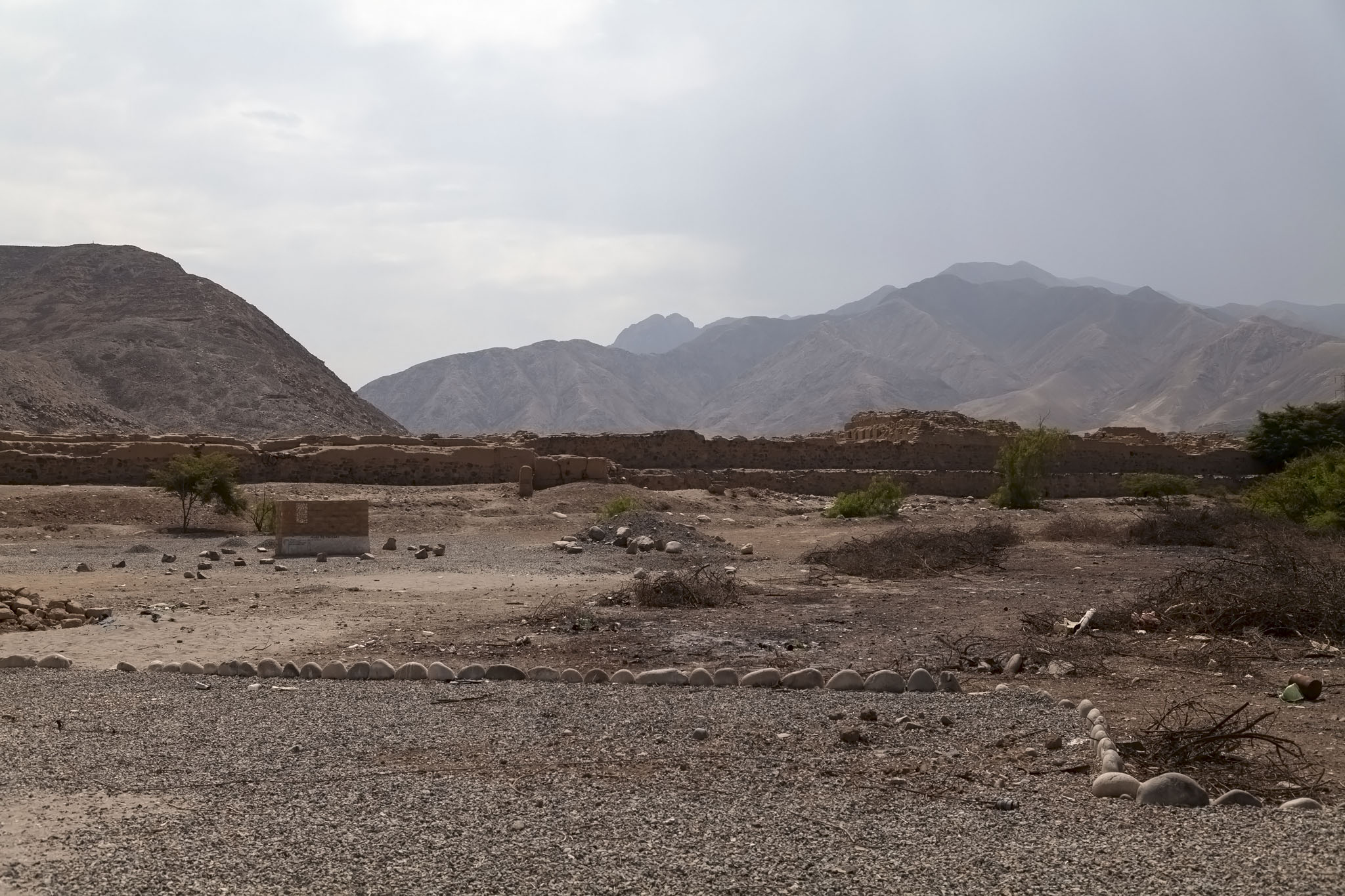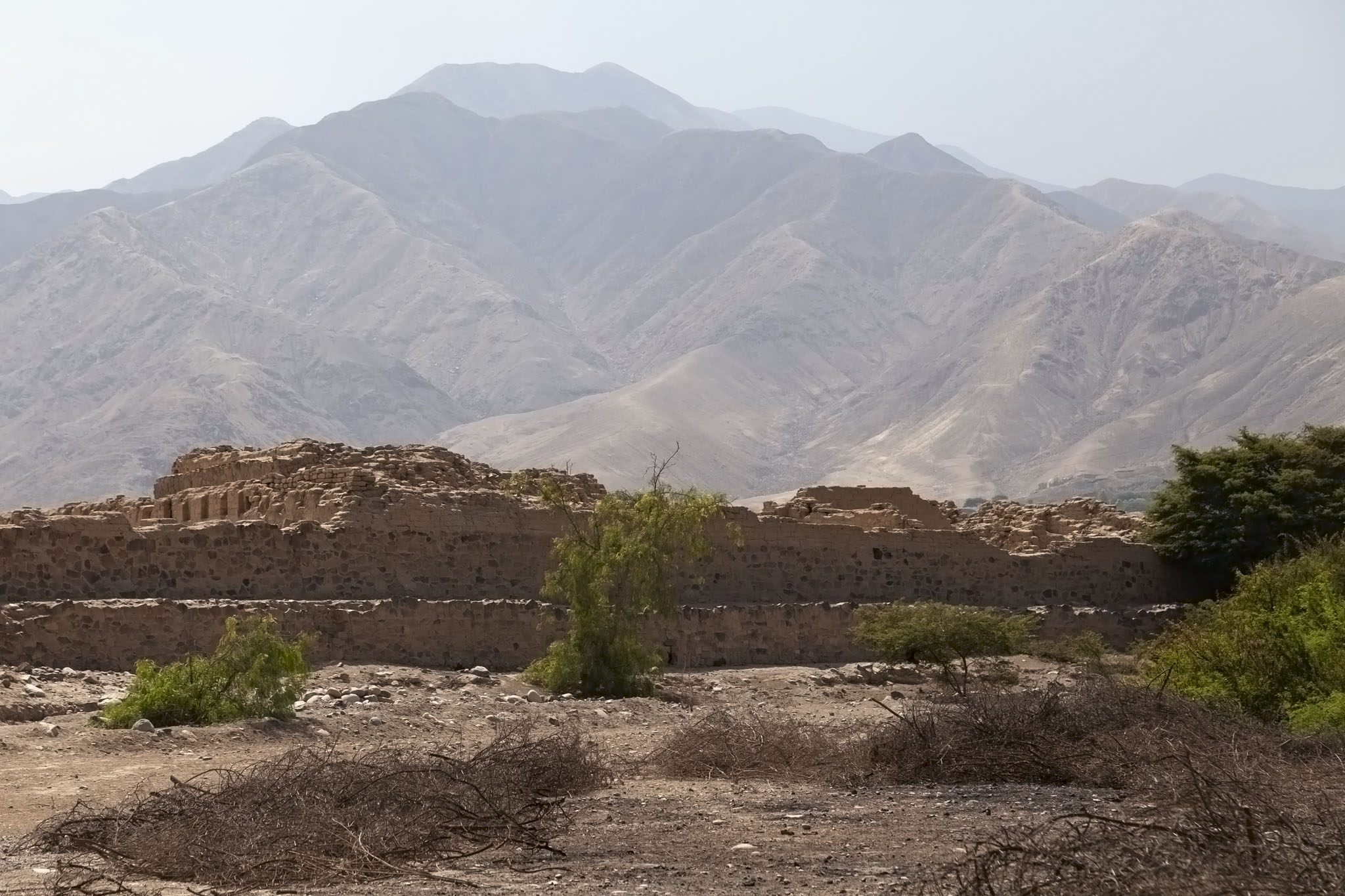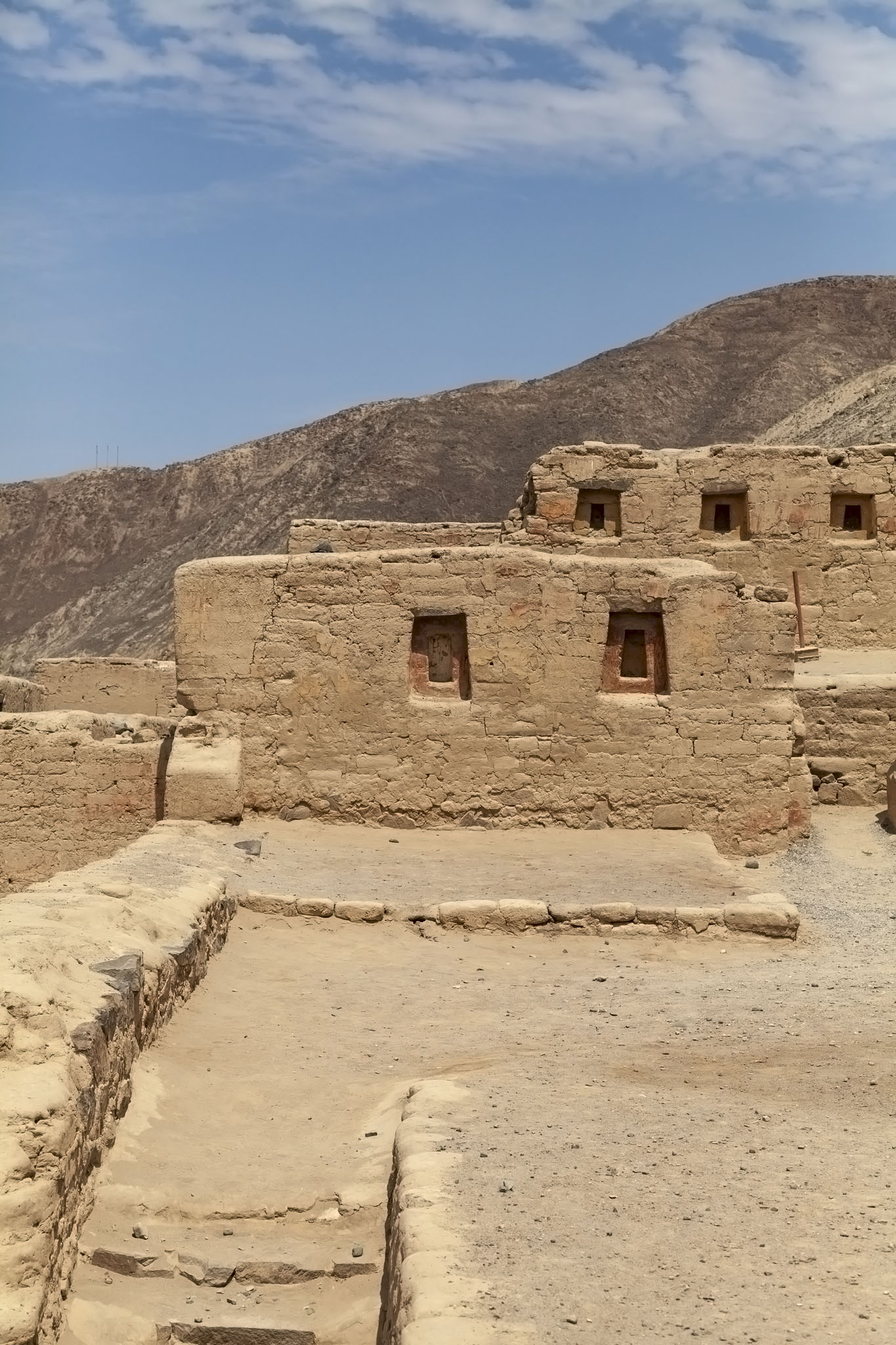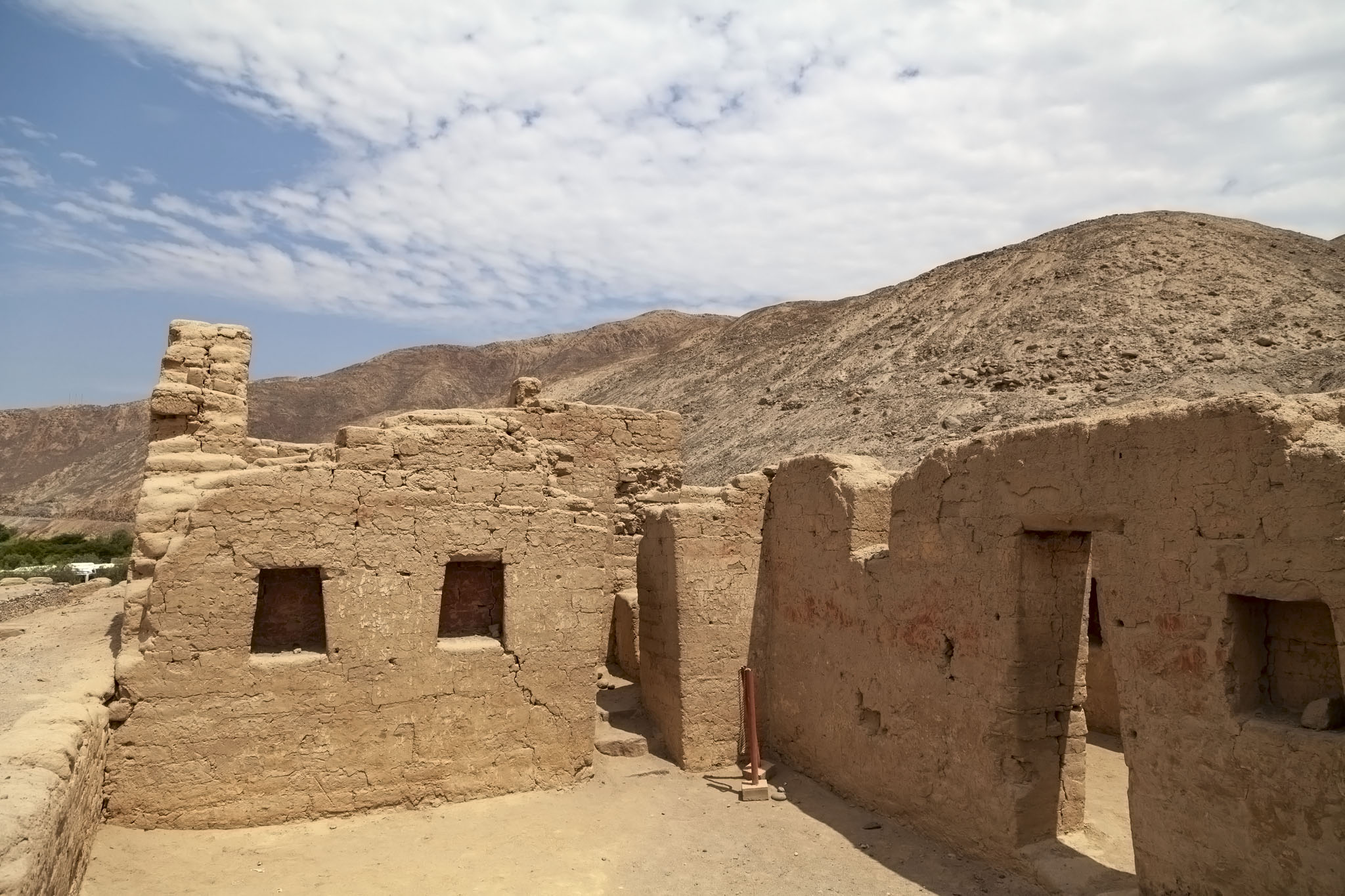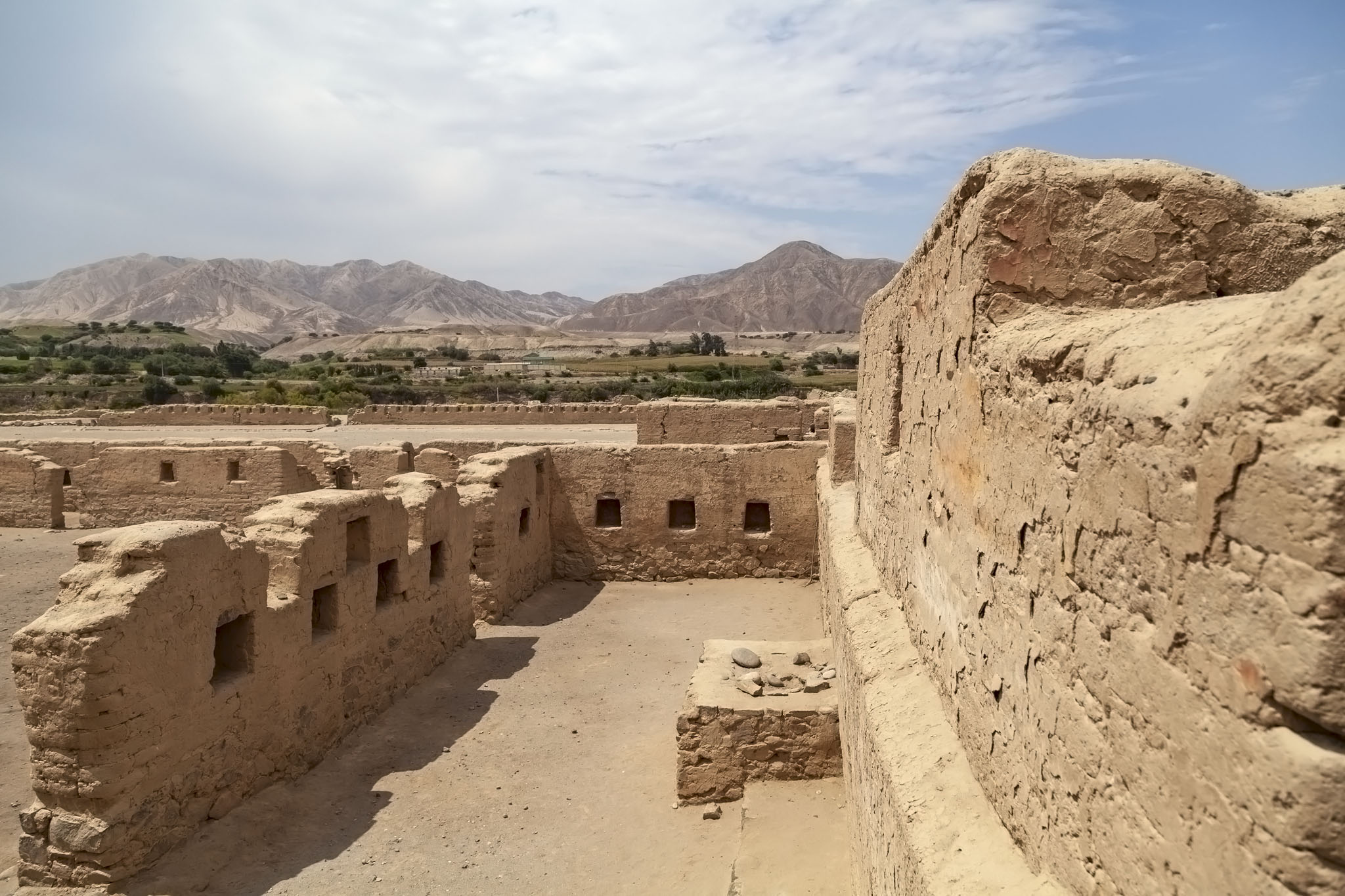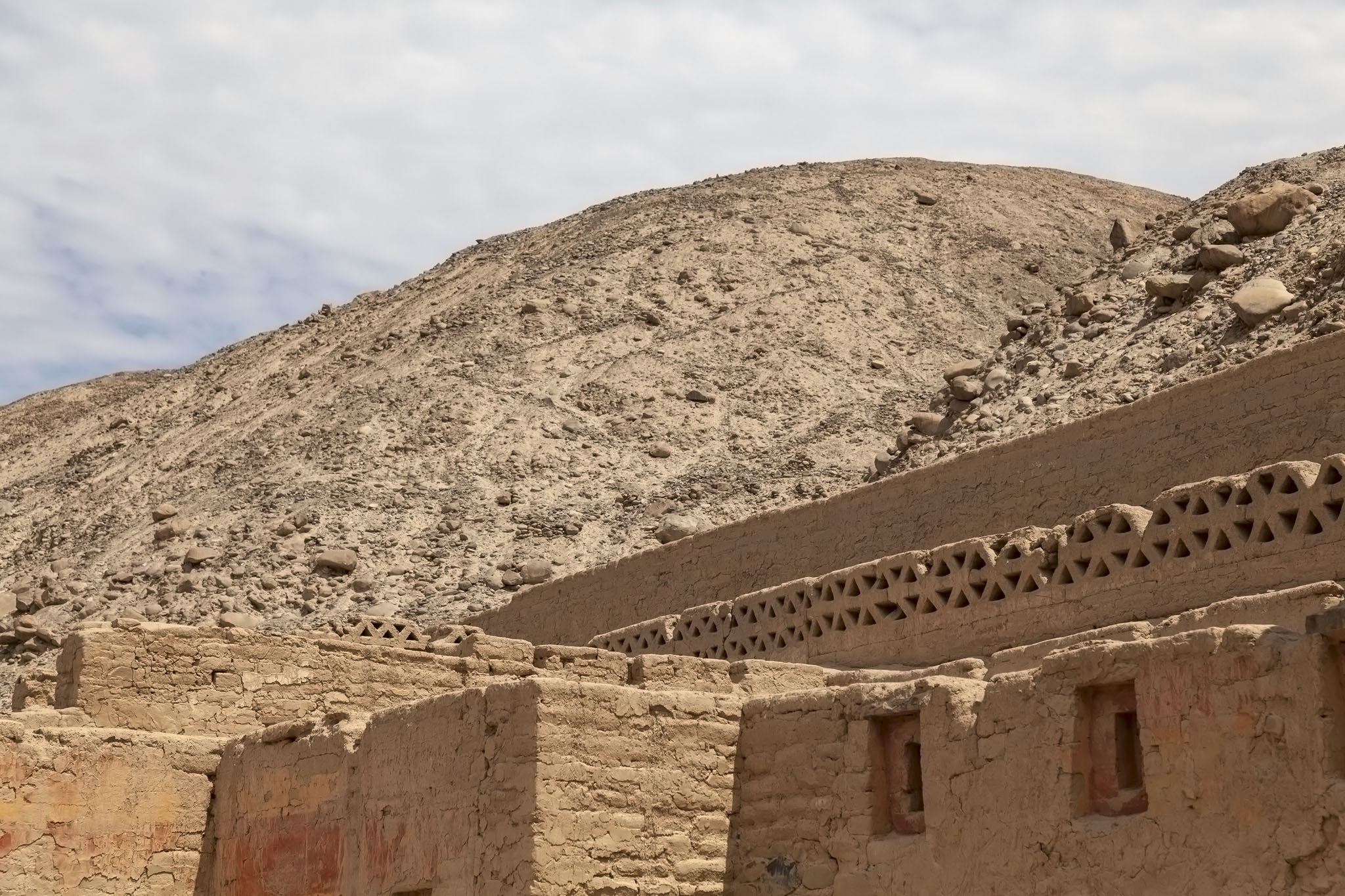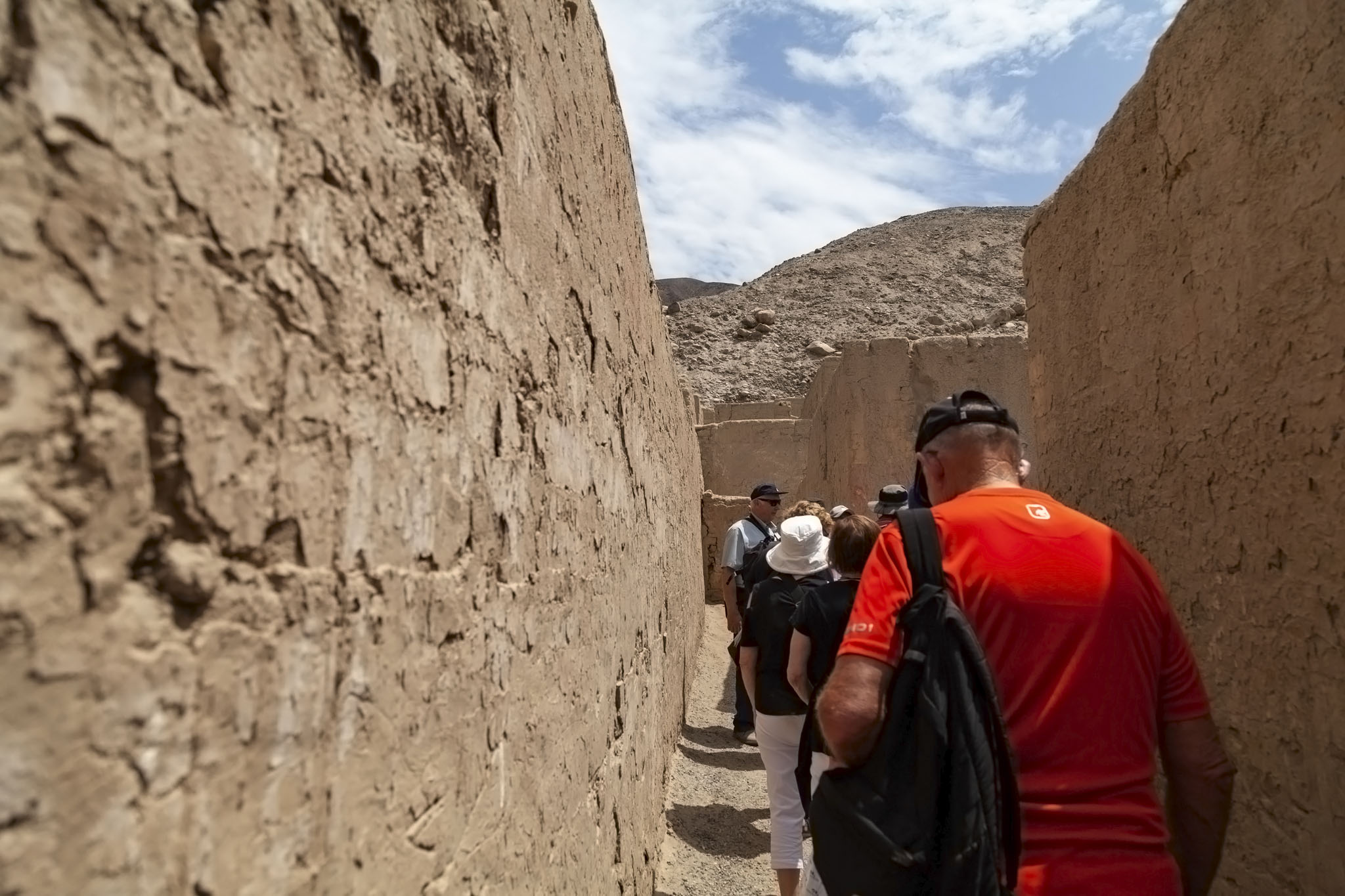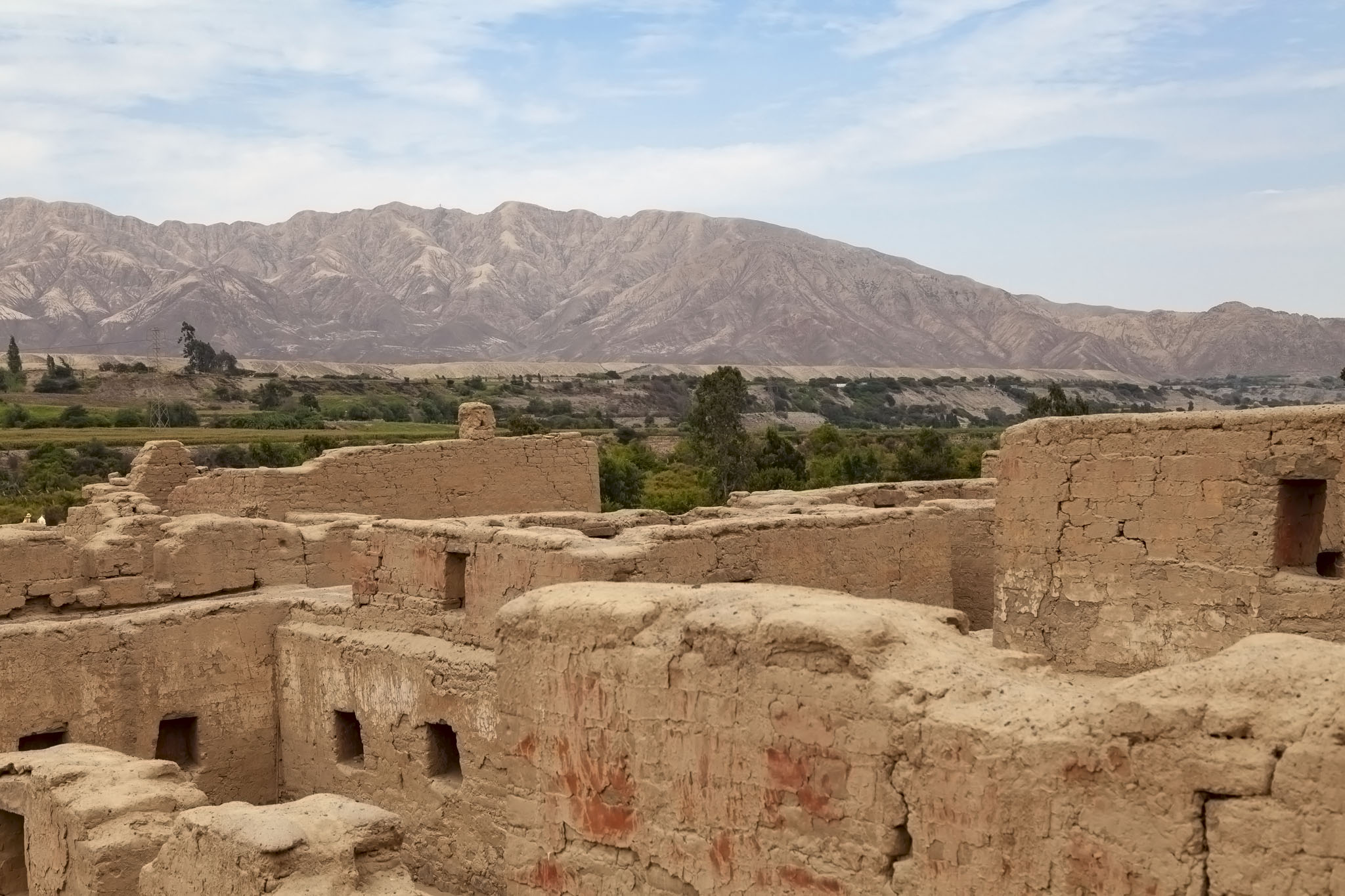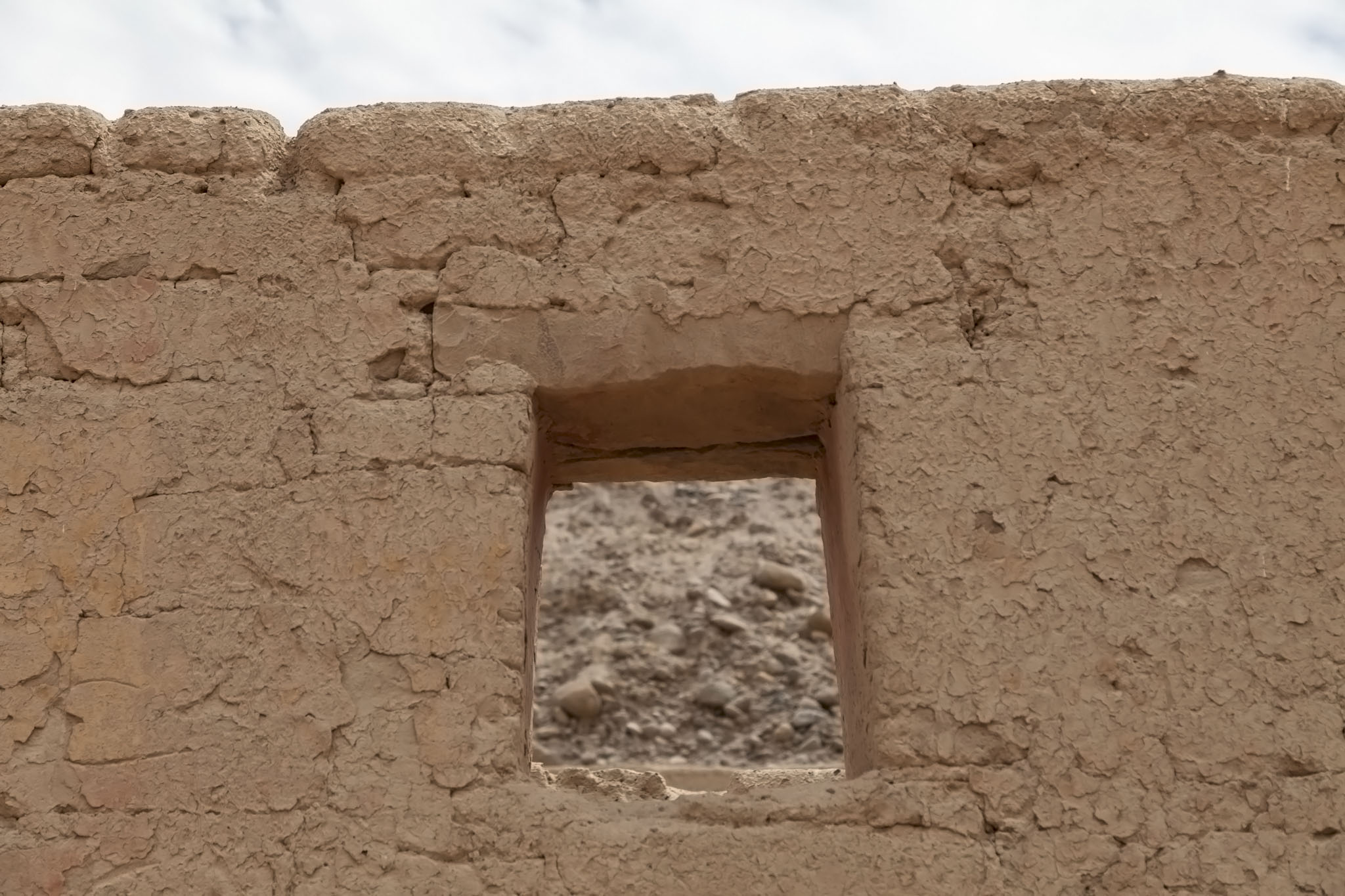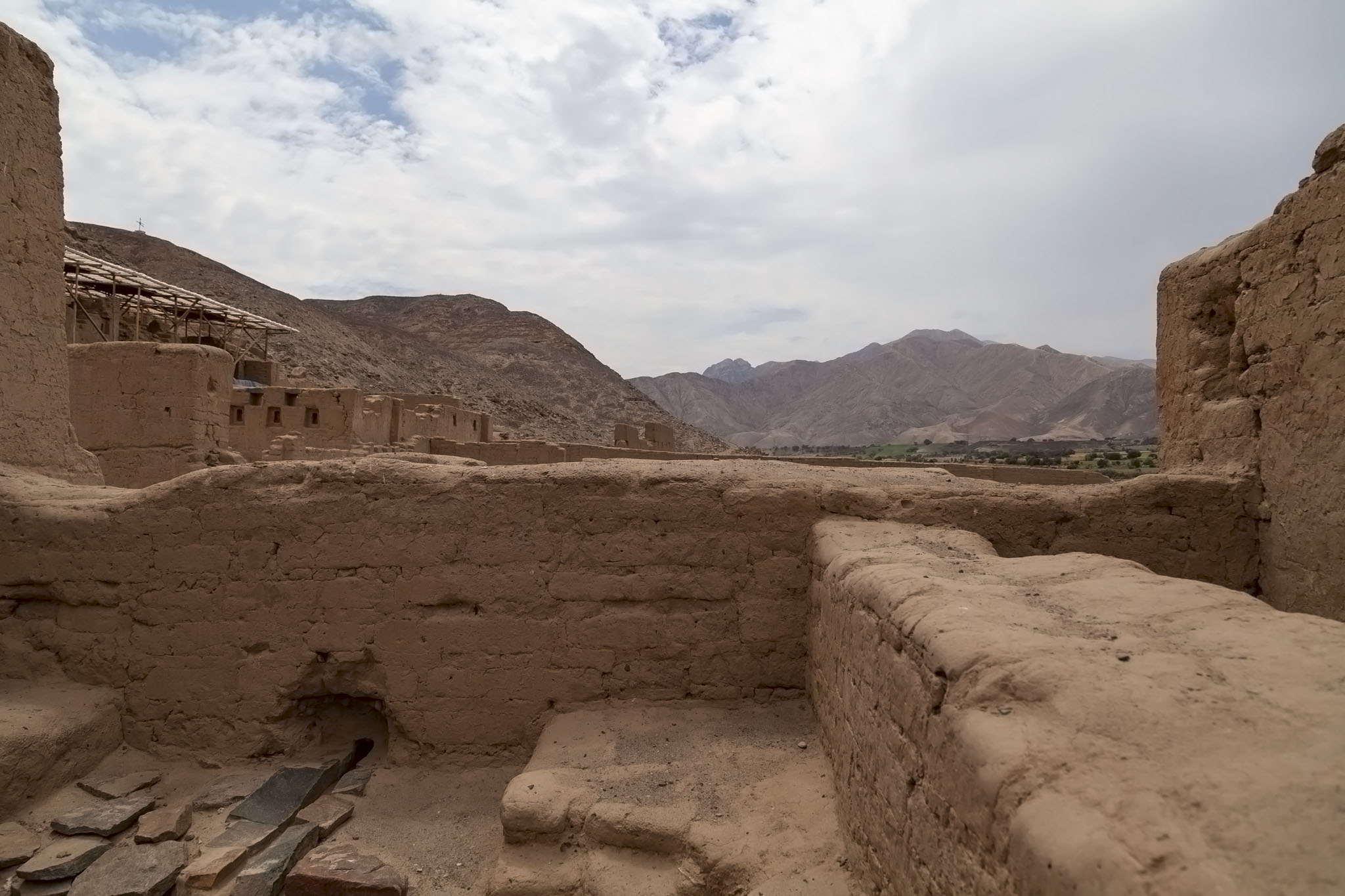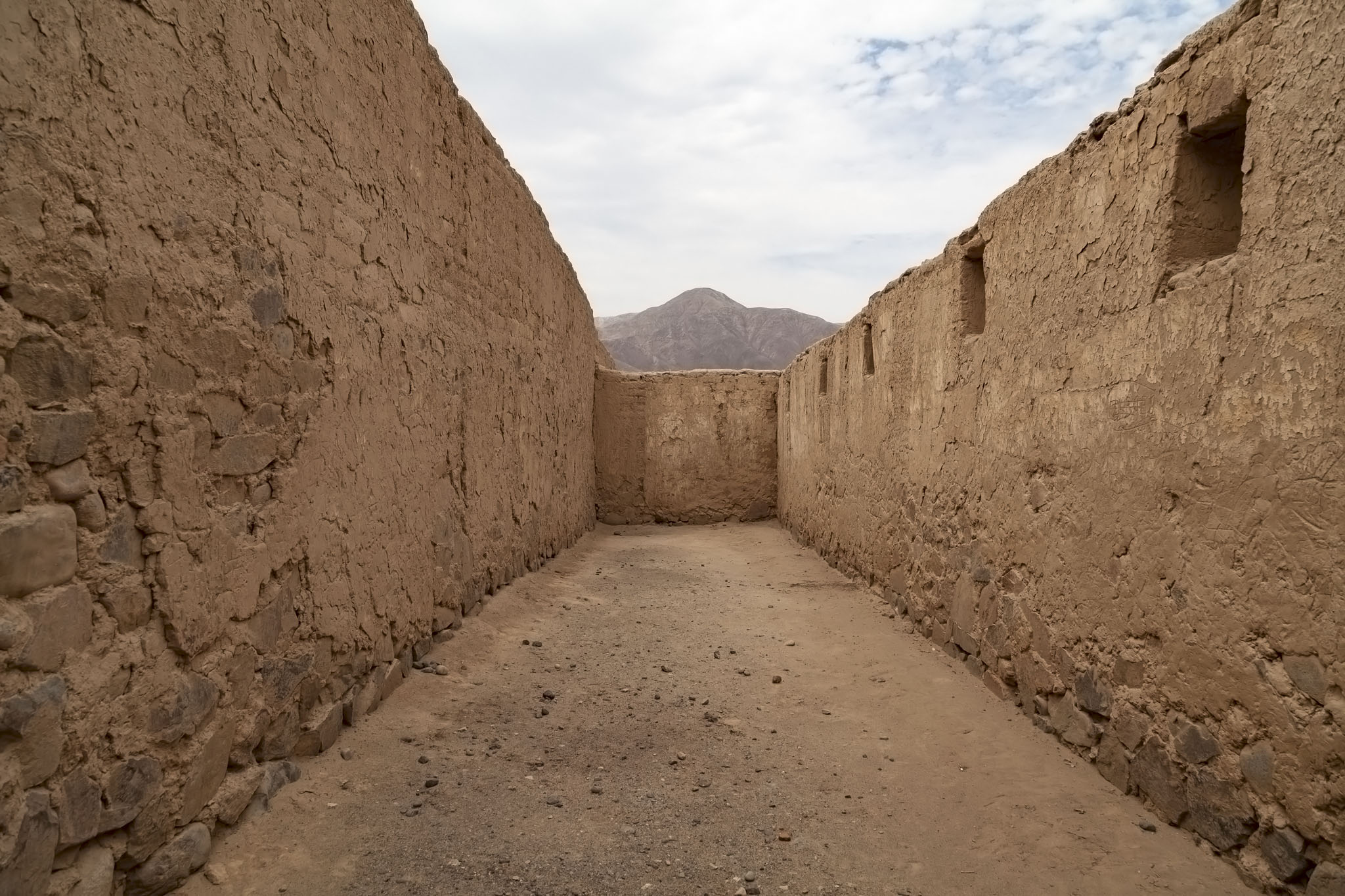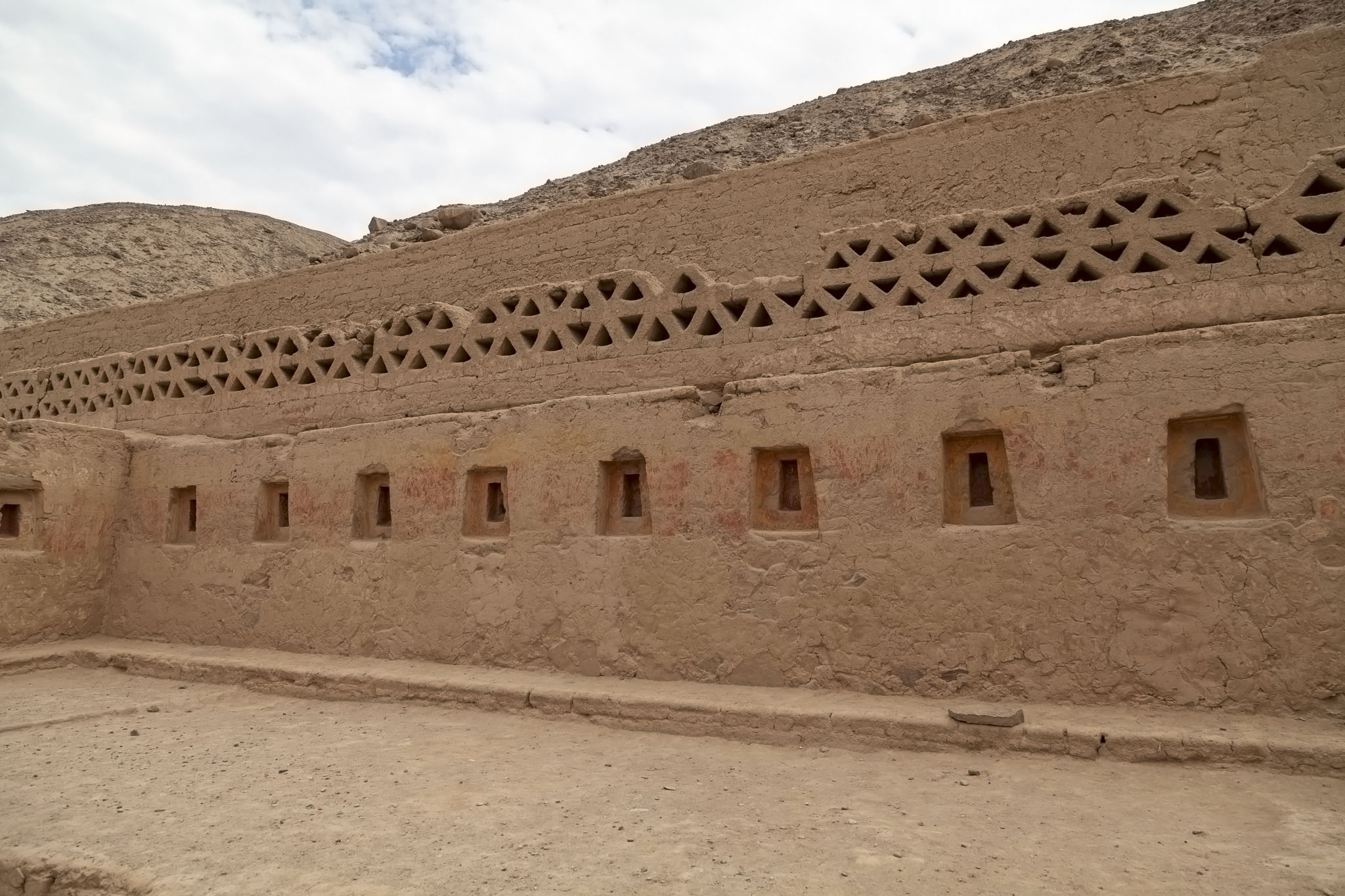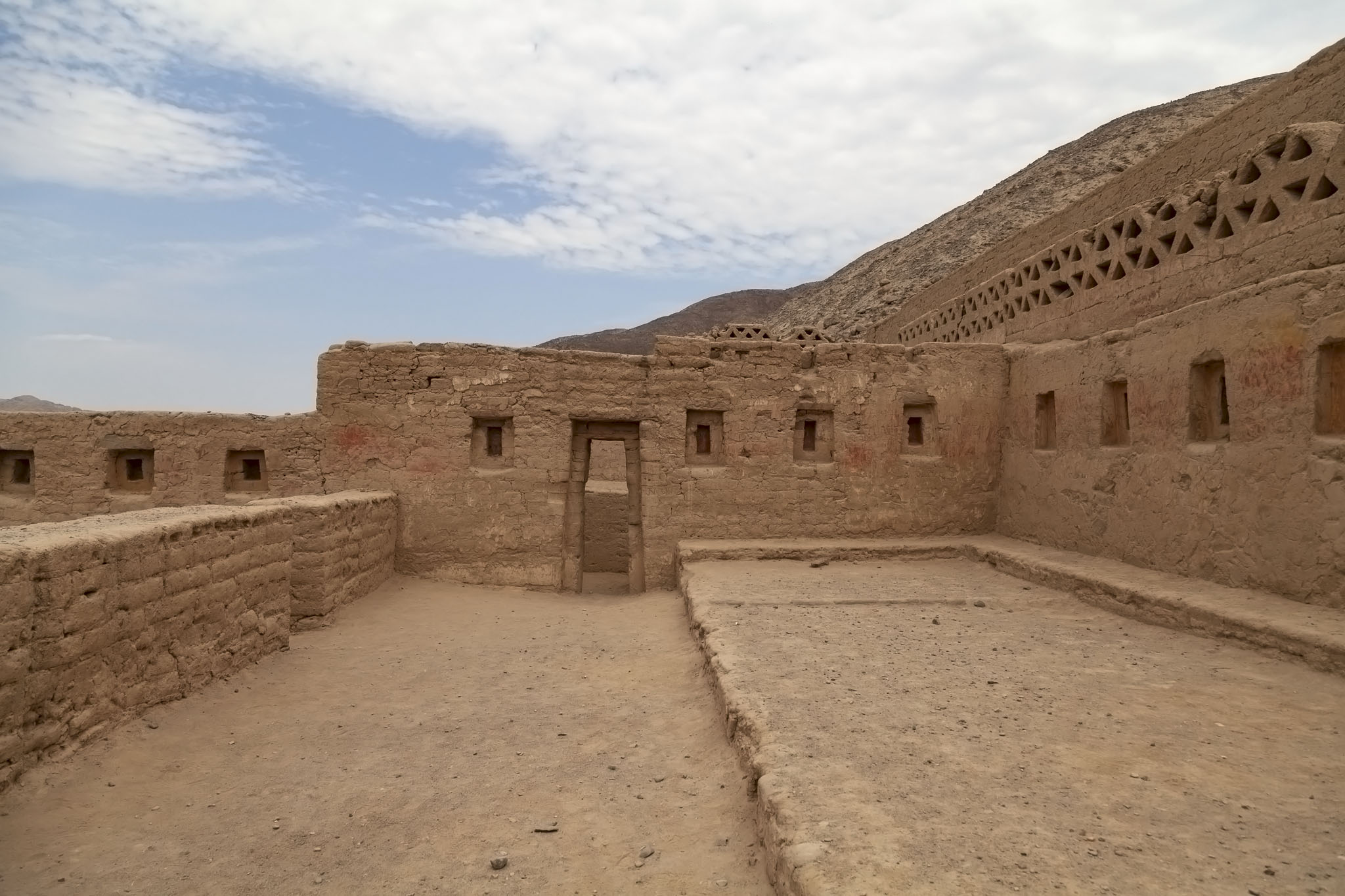The first of our two stops in Peru, our first time visiting this South American country, was at Puerto Gral San Martín on the Paracas Peninsula, itself part of the Paracas National Reserve, an arid conservation zone (it averages one millimetre of rain per year) consisting of both marine and desert ecosystems and a huge array not only of wildlife but also archaeological remains from Incan and Paracas cultures. Independent travel and exploration arrangements would not be easy in a remote port like this but the cruise lines that visit provide excursion options, naturally, and we’re excursion-taking people in case you didn’t know; you may never visit a place again so you’ve got to make the most of it if you can. And if you’re not a tight-arse.
The excursion we picked was to visit the Inca administrative complex Tambo Colorado situated about 40 kilometres inland from the coastal city of Pisco which was around 40 kilometres from where the cruise shop was docked, making for travel time of between an hour and an hour and a half. We don’t tend to do wildlife-based excursions when we’re travelling, favouring historical options when possible, so while the reserve area sounded interesting this would be a chance to set foot on ground that the Inca people walked on and that sort of travel experience is more important to us.
This area of the world is dry and dusty so there wasn’t a lot of beauty to see on the drive to Tambo Colorado although some of the wide open views across the bay and back to the ship as we drove around its edge were lovely. Sadly, video footage from this point on in the cruise is limited to what was shot on my cheap GoPro knock-off and that was mainly from vehicles (although none heading out on this excursion); upon my return all the video I’d taken bar that which has already been posted in the articles covering the start of the cruise and Chile was lost during cloud syncing. It’s a sore subject and one I don’t want to dwell on and I’ll thank you to never mention it again. Even if I will. Constantly. Anyway, there will be some video in the next post as I did take some on the drive back to the port and that will give you a chance to see the Paracas landscape as well as the unfinished-looking buildings that the all local Peruvians live in. The reason for that will be explained then.
Tambo Colorado
We don’t like hot temperatures yet keep visiting places that have them and inland Peru has them. To be fair, until this point all of our trips to places that had made us say “Fuck me!” as we stepped out of air-conditioned environments had been in more tropical climates and we’d not experienced the almost stinging sensation of a dry heat so at least that was something new.
The entrance to Tambo Colorado has a small car park, a small information centre (calling its single room a museum would be a stretch), some toilets at the back of it, and plenty of local salespeople with wares spread out on blankets on the ground or on makeshift stalls. It was very interesting to see some of the people selling trinkets whose bloodlines were clearly native Indian although I refrained from photographing them. That’s the sort of action that ends up with you being bullied or guilted into buying a stone on a string for the cost of a weekend break on the Isle of Wight.
An inevitable wait for fellow passengers to use the loos then a quick look around the information centre to see archaeological finds and models of the site as it originally looked before we ran the gauntlet of salespeople and headed into the Tambo Colorado complex.
Tambo Colorado was built in the late 1400s and was an administrative centre located along the main route to the coast. This was during the reign of Pachacuti who has an absolutely fascinating (bloody, naturally) history and if you don’t know anything about his rise to power and formation of the Inca Empire then please do read that link.
We began our tour in the open square which gave us a good sense of the scale of the complex as well as a better understanding of how the structure was arranged. The long wall along the northern edge with its regular niches was particularly nice but it was to a ceremonial platform that we were first taken and where some of the activities performed there were explained. The Inca used these platforms as connections to other planes (the world of above, the world of here, and the world of the dead). Originally constructed to be places for ceremonial liquid offerings they were also used to conduct astronomical observations and, as you’d probably already guessed based on your own idea about South American Indian tribes, sacrifices did come into fashion for a while too, though whether any took place at Tambo Colorado because of its administrative function is not known.
So, Terry, looks like your report on trade between the coast and highlands is late.
Yeah, a touch of the old upset tummy. I’ll have it you next Tuesday if that’s okay.
I’m afraid not. I don’t make the rules, I just follow them.
You don’t mean…?
Yeah, sorry about this. To the ceremonial platform for you. Joan, would you bring my knife?
A feature of Inca architecture was immediately obvious, that being the trapezoidal shape present in doorways, niches, and windows. Even the open square of Tambo Colorado that separated the main, large, northern buildings from the smaller southern section was arranged in the shape of a trapezoid. The significance of the shape is not known for certain but one possible explanation is that it is less susceptible to earthquake damage, Peru being quite prone to this particular form of natural disaster. This seems plausible when referring to wall-construction techniques as Peruvian walls are generally made with irregularly-shaped blocks that resist movement, and ancient structures have been shown to have broadly trapezoidal forms within that context. For a door or window, though, it’s less obvious that this is a stronger form. A second explanation is that this is the work of aliens. It’s the sort of thing they’d do.
The Inca painted the adobe walls of Tambo Colorado in horizontal ochre bands coloured red, yellow, white, and black because good taste was lacking in the region. Or it’s what the aliens wanted. Whatever the reason was, the dry climate means that a lot of the original material still remains on the walls now (mostly the red and yellow) and, while it’s all cracked and faded, just standing in the ruins of the complex makes it easy to imagine how it all looked when it was new. Pretty gaudy, but probably quite impressive.
Incan architecture tends to be sympathetic to the lay of the land so the levels present in Tambo Colorado were built up as the ground naturally rose towards the hills surrounding it. This, of course, gave plenty of opportunities to see views out over the tops of some of the walls but also meant that exploring inside would sometimes require climbing or descending steps. Interestingly, while the general form of the trapezoid continued to be present in every room we were taken through, there seemed to be no real design to the room layouts; corridors were narrow, barely able to squeeze two past at a time, and rooms would appear out of nowhere in various sizes and configurations. This could have been a defensive measure, designed to slow down any attacking force, or the architect might just have been half-cut on pisco sour when he came up with the plans. But never rule out alien influence too.
One room stood out from the others, this being one with a deep recess in the floor. This was the bath or pool and I imagine it would have been a very popular location in the complex on days like the one we visited. How long the water would stay in the pool before it soaked into the ground or how the pool was filled in the first place was something I didn’t hear. Due to the small size of the room we could only enter in groups of half a dozen and I missed the explanation, if there was one, quite possibly when I was explaining to an American woman that yes, I understood she wanted to come into the room too but that unless she had access to molecular phase-shifting technology that would allow me to pass through her she was going to have to back out of the doorway first so I could make room. People, eh?
We had some spare time at the end of the guided part of the tour of Tombo Colorado where we could either head back to the toilets, museum, salespeople, or bus or we could wander around a little more on our own. We elected to do the latter although I was careful not to head too far into the maze of rooms or onto higher levels we’d not yet seen as my wife gets anxious when she thinks she might get lost. I have learnt that when you’re asked “Do you know where we are?” that the answer should always be “Absolutely! Map in my head. Perfect sense of direction. I can picture where we are to within a metre on a map. Don’t you worry about a thing, we’ve got plenty of time and I know the route out of here and how long it will take.” I think we’ve only really got lost a couple of times and I’m pleased to report this wasn’t one of them.
Tambo Colorado is very exposed on account of none of the roofing structures surviving, and the dry climate in the region made for a very intense heat with almost no shade so our water did not last long despite us taking twice as much as we normally pack for excursions. It was a great experience to visit a place built and occupied by the Inca and I’d definitely recommend it if you’ve an interest in history or are paranoid about fictional alien influences in ancient South American architecture.





